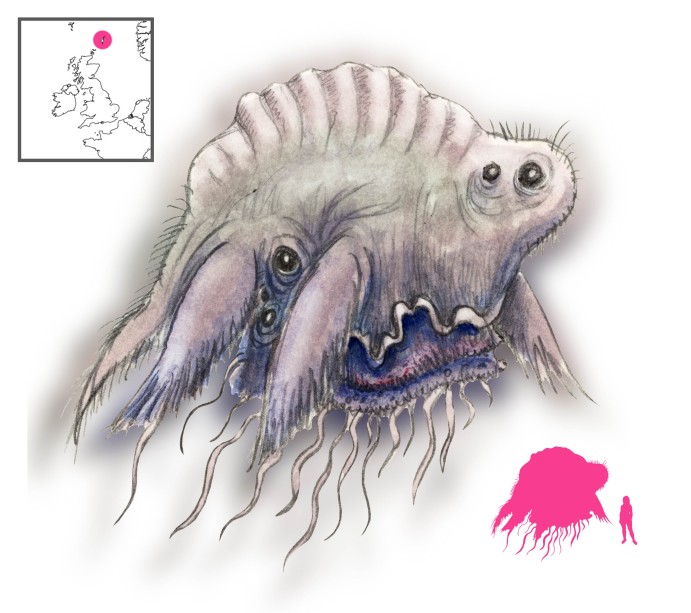
The Wulver lives alone in a cave halfway up a steep knowe on the Isle of Unst in Shetland. He stands upright like a man, but has a wolf’s head and a body covered in short brown hair.
A peaceful loner, the Wulver never harms people as long as he isn’t harmed. He likes to fish, and for hours will sit upon a rock, the “Wulver’s Stane”, and catch yearling coalfish. Frequently he will leave a gift of a few fish on the windowsill of the poor and old of Shetland.
References
Angus, J. S. (1914) A Glossary of the Shetland Dialect. Alexander Gardner, Paisley.
Fleming, M. (2002) Not of this World: Creatures of the Supernatural in Scotland. Mercat Press, Edinburgh.
Saxby, J. M. E. (1932) Shetland Traditional Lore. Grant and Murray Limited, Edinburgh.


